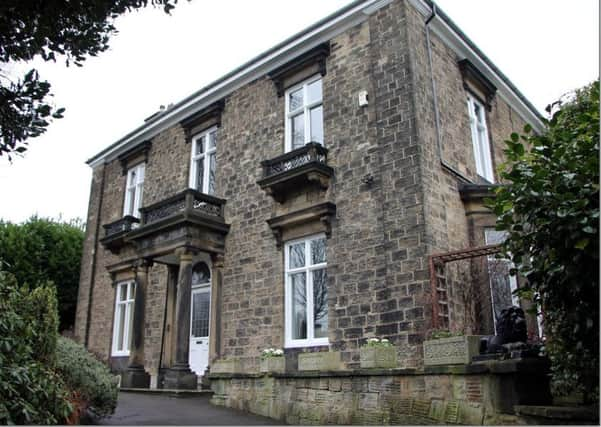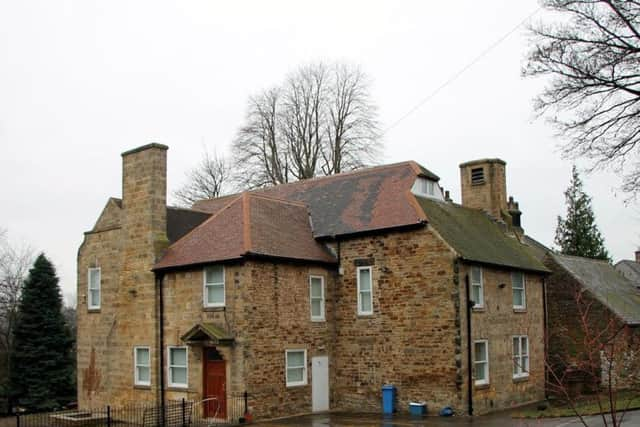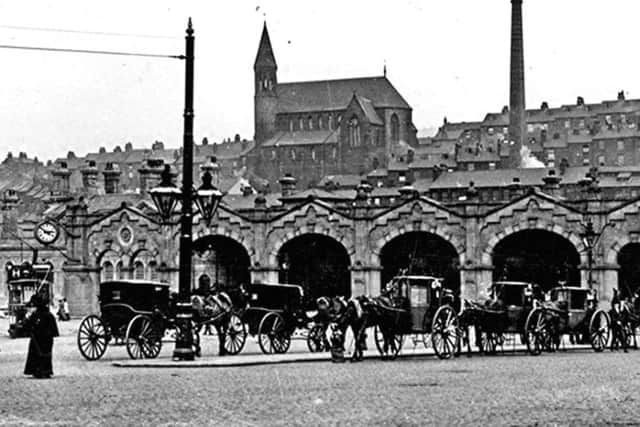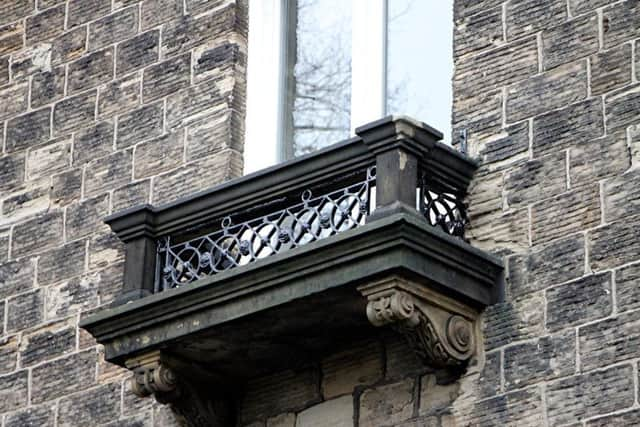RETRO: Home of the successful Sheffield building firm, the Forsdike's


I’ve decided to stay in the Granville Road area for a further week simply because of its beautiful houses and its history, one look at the houses in this area and you realise just what rubbish now pass for new builds.
The clue picture shows an upper small cast iron balustrade on No 97 Norfolk Road, the ironwork is decorated with lion heads, but on close inspection the stonework is beginning to succumb the weather and if it’s not checked it will only get worse.


Advertisement
Hide AdAdvertisement
Hide AdAt this great stone built house lived part of the Sheffield building family the Forsdike’s, it seems to me it was a self build and lots of care was taken in its construction.
The firm itself was established around 1864 by Alfred David Forsdike as a joiner and undertakers working out of 24-32 St Mary’s Road and as the business grew further premises were needed by 1879 another part of the family.
Walter was working out of premises on Button lane as a joiner and builder, Walter is listed as a foreman living at 7 St Mary’s Road in 1880, whether he didn’t want to become part of the board, or he was never asked, I can’t say.
By the turn of the century the firm were sharing premises at 379 Queens Road with Charles Black Timber Merchants, in the same year one of the sons had qualified as an architect and was working out of offices 109 Queen Street.


Advertisement
Hide AdAdvertisement
Hide AdThe firm was part of the Master Builders Association so all their hard work had been worthwhile, William David Forsdike was also the managing director of the Alexandra Theatre on Blonk Street.
In the 1890s William David Forsdike became proprietor of the Alexandra, which by this time was being referred to as the Alexandra Theatre rather than a music hall.
The pantomime Cinderella appears to have been produced at the Alexandra Theatre in 1897 and was probably revived for the following year under the Forsdike’s management.
William passed this life on March 20 1931, his father Alfred had died on December 25 1927 with his wife passing just three years before on April 20 1924, the firm continued into the 1980s but after that I can’t find any information.


Advertisement
Hide AdAdvertisement
Hide AdLiving at 84 Norfolk Road more or less opposite the Forsdike’s was Mr Matthew Ellison Hadfield who was born on September 8 1812 and he died March 9 1885, he was an English architect of the Victorian Gothic revival.
He is chiefly known for his work on Roman Catholic churches, including the cathedral churches of Salford and Sheffield.
Hadfield was born at Lees Hall in Glossop, Derbyshire, the son of Joseph Hadfield and Mary Hadfield.
He attended Woolton Grove Academy in Liverpool, and subsequently, between 1827 and 1831, he worked for his uncle Michael Ellison, his mother’s brother, agent of the estates of the Dukes of Norfolk in Sheffield.


Advertisement
Hide AdAdvertisement
Hide AdFrom 1831 he was articled to the architectural firm of Woodhead and Hurst of Doncaster, and then to PF Robinson of London.
He married Sarah Frith of Sheffield at around this time.
Practising as an architect in Sheffield from 1834, Hadfield’s first commission was the design of the Cholera Monument in Sheffield, a memorial to the 402 victims of the cholera epidemic of 1832 in the city.
In 1838 Hadfield entered a partnership in Sheffield with John Grey Weightman, which lasted until 1858.
In 1850 they were joined by their former pupil George Goldie, and the partnership between Hadfield and Goldie lasted until 1860.
Advertisement
Hide AdAdvertisement
Hide AdFrom 1864 or 1865 Hadfield was in partnership with his son Charles Hadfield.


After Hadfield’s death in 1885, his son continued the practice, and was later joined in partnership by Hadfield’s grandson Charles Matthew Ellison Hadfield.
As an architect, Hadfield was an early follower of the Gothic revival movement led by AWN Pugin.
Hadfield designed numerous Catholic churches, including All Saints, Glossop; St Bede’s, Rotherham; St Hilda’s, Whitby; St Catherine’s Church, Littlehampton; and St Chad’s.
Advertisement
Hide AdAdvertisement
Hide AdHis largest and most significant work was St John’s Church in Salford which in 1850 was elevated to cathedral status upon the restoration of the Catholic hierarchy in England and Wales.
St John’s was in the decorated style, as was St Marie’s Church in Sheffield elevated to cathedral status in 1980.
A further cathedral commission, in the form of the Cathedral of the Annunciation and St Nathy, Ballaghaderreen, in the diocese of Achonry, Ireland, came in 1855 and was completed 1860.
Hadfield also designed railway stations, including that at Glossop, together with the Wicker Arches viaduct, in the neo-classical style, in Sheffield in 1848.
Advertisement
Hide AdAdvertisement
Hide AdYou can see a carving of Hadfield over the Presbytery of St Marie’s on Norfolk Street, His home is still standing but its gardens have now been swept away in favour of the car.
His other projects were St Joseph’s Church, Stockport; St Mary’s Church, Llanfair-yng-Nghornwy; St Mary’s Church, Grimsby; St Vincent’s Church, Sheffield (Chapel-school); Chapel at St Michael’s Cemetery, Sheffield; Sheffield United Gas Light Company Offices, Thornbury, Sheffield; Monastery of The Holy Spirit, Sheffield; and Sacred Heart Church, Hillsborough; quite a portfolio I’m sure you agree.
Also on Norfolk Road sits the Chapel House which was the offices and home of the Vicar of St Luke’s Church on Dyers Hill on South Street, high on the hill overlooking the town.
The Chapel House was erected in 1880, at a cost of £2,000, on a site in Norfolk Road, presented by the late Henry Wilson Esq.